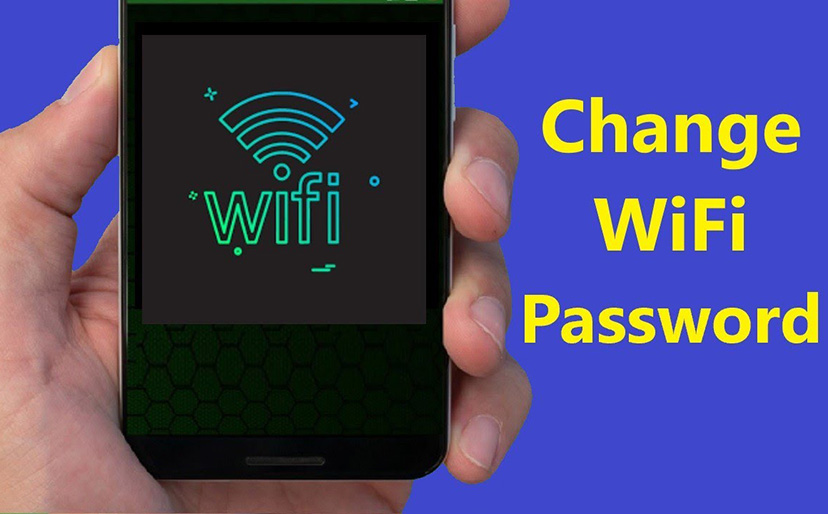(Ultimate Guide) How to reset your WiFi password and name?
Changing your Wi-Fi password periodically is an important step in maintaining the security of your wireless network. A strong and unique converge password helps prevent unauthorized access and protects your personal information. This ultimate guide will walk you through the process of changing your Wi-Fi password and Wi-Fi name on different devices and router models.

Note: The steps provided may vary slightly depending on your router model and firmware version. It's recommended to consult your router's user manual or manufacturer's website for specific instructions.
Section 1: Preparing for the Password Change
- Understand your router: Familiarize yourself with your router's brand, model, and default login credentials. This information is usually found on the router itself or in the user manual.
- Access the router's administration interface: To change your Wi-Fi password, you need to access your router's administration interface. This is typically done through a web browser.
- Connect to the router: Ensure that your device is connected to the router either through a wired Ethernet connection or via Wi-Fi. For the best experience, a wired connection is recommended during the password change process.
Section 2: Changing the Wi-Fi Password
Step 1: Accessing the Router's Admin Interface
- Open a web browser: Launch your preferred web browser (e.g., Google Chrome, Mozilla Firefox, Safari, or Microsoft Edge).
- Enter the router's IP address: In the browser's address bar, type the router's IP address. Common router IP addresses include 192.168.0.1, 192.168.1.1, or 192.168.2.1. If none of these work, refer to your router's user manual or manufacturer's website for the correct IP address.
- Enter login credentials: You will be prompted to enter the router's username and password. If you haven't changed them before, try the default credentials. Popular defaults include "admin" for both the username and password, or "admin" for the username and a blank password field.
- Access the router's settings: Once logged in, you should be directed to the router's administration interface or settings page.
Step 2: Locating the Wi-Fi Settings
- Navigate to the wireless settings: Look for a tab or section labeled "Wireless," "Wi-Fi," or "Network Settings." The exact location may vary depending on your router's firmware.
- Find the Wi-Fi password and wifi name field: Look for the field that displays the current Wi-Fi password and wifi name. It may be labeled "Password," "Passphrase," or "Network Key."
Step 3: Changing the Wi-Fi Password
- Generate a new strong password: Use a combination of uppercase and lowercase letters, numbers, and special characters to create a strong and unique converge password. Avoid using easily guessable information like your name or address.
- Update the password field: Replace the existing Wi-Fi password with the new password you generated.
- Save the changes: Look for a "Save," "Apply," or "Submit" button to save the new Wi-Fi password. Your router may need to restart to apply the changes.
Step 4: Updating Connected Devices
- Reconnect devices: Once the password is changed, you need to update the Wi-Fi settings on all your connected devices. Go to the Wi-Fi settings on each device, select your network, and enter the new Wi-Fi password.
- Reconnect smart home devices: Smart home devices such as thermostats, cameras, or speakers may need to be reconfigured with the new Wi-Fi password. Follow the manufacturer's instructions to update the Wi-Fi settings on each device.
Section 3: Additional Security Measures
- Enable WPA2/WPA3 encryption: In the router's Wi-Fi settings, ensure that WPA2 or WPA3 encryption is enabled. This encrypts the data transmitted over your Wi-Fi network, adding an extra layer of security.
- Disable WPS: Wi-Fi Protected Setup (WPS) can have vulnerabilities and should be disabled in your router's settings to minimize potential risks.
- Regularly update router firmware: Check the manufacturer's website periodically for firmware updates. Keeping your router's firmware up to date ensures you have the latest security enhancements and bug fixes.
- Change router login credentials: For added security, change the default login username and password for your router's administration interface.
By following the steps outlined in this ultimate guide, you can change your Wi-Fi password and enhance the security of your wireless network. Remember to choose a strong password and update the Wi-Fi settings on all your connected devices to maintain a secure and protected home network.
Thank you for visiting Blackview blog. Hope the guide has been helpful.
Read also,







